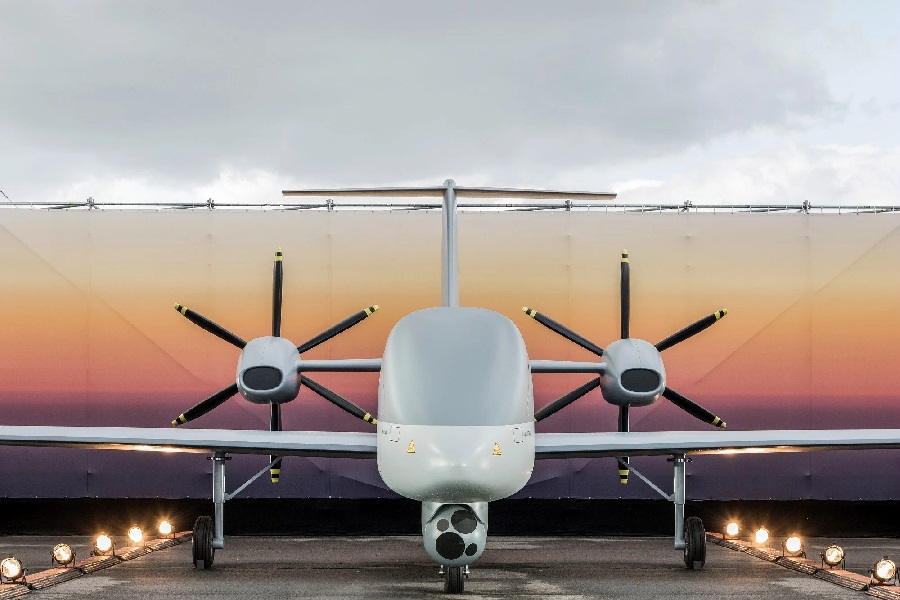The genesis of NLAW: a Swedish-British cooperation
The inception of the NLAW system was driven by a shared vision between Sweden and the United Kingdom to revolutionize anti-tank capabilities for infantry forces. This collaboration harnessed the innovative prowess of Saab, Sweden’s defence technology leader, with the UK’s rich legacy in military tactics and hardware development. Together, they embarked on a journey to create a man-portable, versatile, and highly effective anti-tank system that addressed the evolving requirements of modern combat. The synergy of Swedish and British defence capabilities facilitated a development process that was as much about technological innovation as it was about creating a tactical game-changer for ground forces worldwide.
Technical mastery: unpacking the NLAW’s specifications
The NLAW system is distinguished by its sophisticated technical specifications, designed to offer unmatched operational versatility and lethality. It is a man-portable anti-tank missile system, featuring a soft-launch mechanism that allows for deployment in confined spaces—a critical advantage in urban warfare. This capability is facilitated by a unique saltwater countermass system that enables the missile to be safely fired from enclosed positions as small as 4 x 2.5 x 2.5 meters, significantly reducing the launcher’s exposure to enemy fire.
Weighing approximately 12.5 kg (28 lbs) with a missile weight of 6.5 kg (14 lbs), the NLAW strikes an optimal balance between portability and destructive potential. Its warhead, weighing 1.8 kg (4 lbs), is engineered to penetrate modern tank armours, including those equipped with explosive reactive armour. The NLAW operates within an effective range of 20 to 800 meters, accommodating both close-quarters combat and engagements at greater distances.
The system’s dual attack modes, Overfly Top Attack (OTA) and Direct Attack (DA), provide comprehensive engagement strategies against armoured targets. OTA mode exploits the weaker armour on the top of tanks, while DA mode allows for versatility against non-armoured targets and fortifications. The NLAW’s fire-and-forget capability, enhanced by a Predicted Line Of Sight (PLOS) guidance system, enables the operator to remain concealed, minimizing exposure to enemy counteractions.
Combat proven: the NLAW in Ukraine
The NLAW’s operational capabilities were put to the ultimate test on the battlefields of Ukraine. Prior to the escalation in 2022, the UK supplied Ukraine with 2,000 NLAW units, with subsequent deliveries reaching over 8,000 units amidst the conflict. The system’s soft-launch mechanism and confined-space firing capability proved invaluable in the dense urban landscapes and the varied tactical environments of the war, from high-intensity conflict zones to asymmetric and guerrilla warfare settings.
Ukrainian forces leveraged the NLAW’s precision and ease of use to devastating effect, significantly impacting Russian armoured columns and fortifications. The system’s effectiveness in urban combat, where engagements often occur at closer ranges and require rapid mobility, was particularly noted. The NLAW’s ability to quickly engage and destroy enemy tanks and armoured vehicles with minimal training and preparation underscored its status as a force multiplier for the Ukrainian Armed Forces. Its deployment highlighted not only the weapon’s tactical versatility but also its strategic significance in bolstering Ukraine’s defensive capabilities against a technologically superior adversary.
The international response to the conflict saw further shipments of NLAWs to Ukraine, reflecting the weapon’s perceived effectiveness and the global community’s support for Ukrainian defence efforts. These deliveries, including substantial contributions from Luxembourg and additional commitments from the UK, underscored the NLAW’s role as a critical asset in the Ukrainian military’s arsenal. Reports from the field attested to the NLAW’s superior performance compared to Soviet-era equipment and its advantages over other advanced anti-tank systems, such as the U.S. FGM-148 Javelin, in many tactical scenarios.
A model of defence collaboration
The development of the NLAW system by Sweden and the UK is a testament to the power of international collaboration in defence technology. This partnership not only brought to fruition a system that has proven pivotal in contemporary conflict but also set a precedent for future cooperative defence initiatives. The success of the NLAW program illustrates how shared goals and complementary strengths can lead to innovations that transcend national borders and become assets for global security.
Global adoption: the expanding NLAW family
The efficacy and versatility of the NLAW system have led to its adoption by several countries beyond its creators, Sweden and the UK. Armed forces across Europe and beyond, including Finland, Luxembourg, and Switzerland, have integrated the NLAW into their military arsenals, drawn by its operational advantages and proven combat performance. This widespread acceptance speaks volumes about the system’s adaptability to different tactical doctrines and battlefield conditions.
The strategic edge of NLAW
The NLAW system offers a blend of tactical flexibility, operational simplicity, and lethal efficiency, making it an invaluable asset in modern military engagements. Its man-portable nature and confined-space firing capability provide ground forces with a level of mobility and tactical surprise that is unmatched by traditional anti-tank weapons. Moreover, the NLAW’s dual-mode attack capability ensures that it remains effective against a broad spectrum of targets, from heavily armoured main battle tanks to lighter vehicles and fortifications.
The effectiveness of the NLAW in real combat scenarios, particularly in the high-stakes environment of the Ukrainian conflict, has not only validated its design principles but also demonstrated the enduring value of anti-tank systems in asymmetric warfare and conventional conflicts alike. As military strategies continue to evolve in response to emerging threats and operational challenges, the NLAW stands as a symbol of innovation, resilience, and the enduring importance of international defence cooperation.











![Mobilising artillery – developments, challenges and the Russo-Ukrainian war [LONG READ]](https://defence-industry.eu/wp-content/uploads/2023/08/European-Union-supports-Ukraine-with-substantial-artillery-ammunition-deliveries.jpg)















